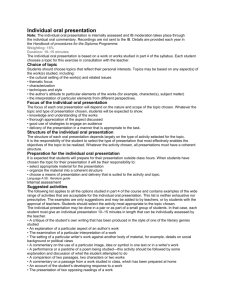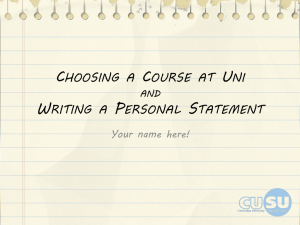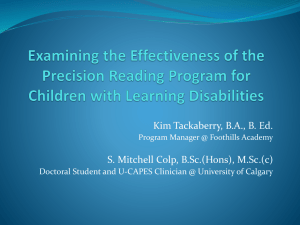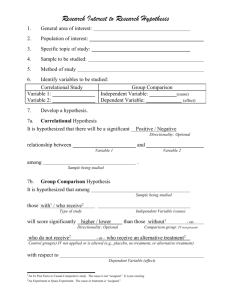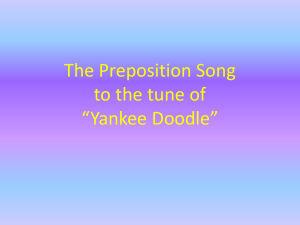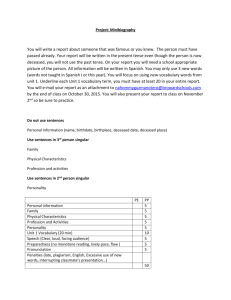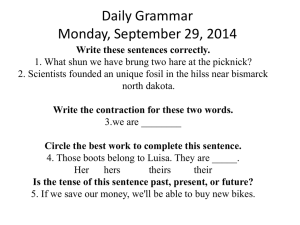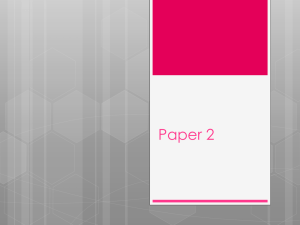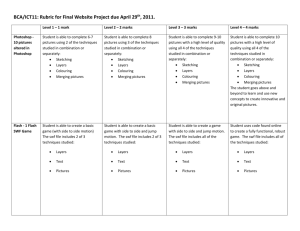- ESL101.com
advertisement
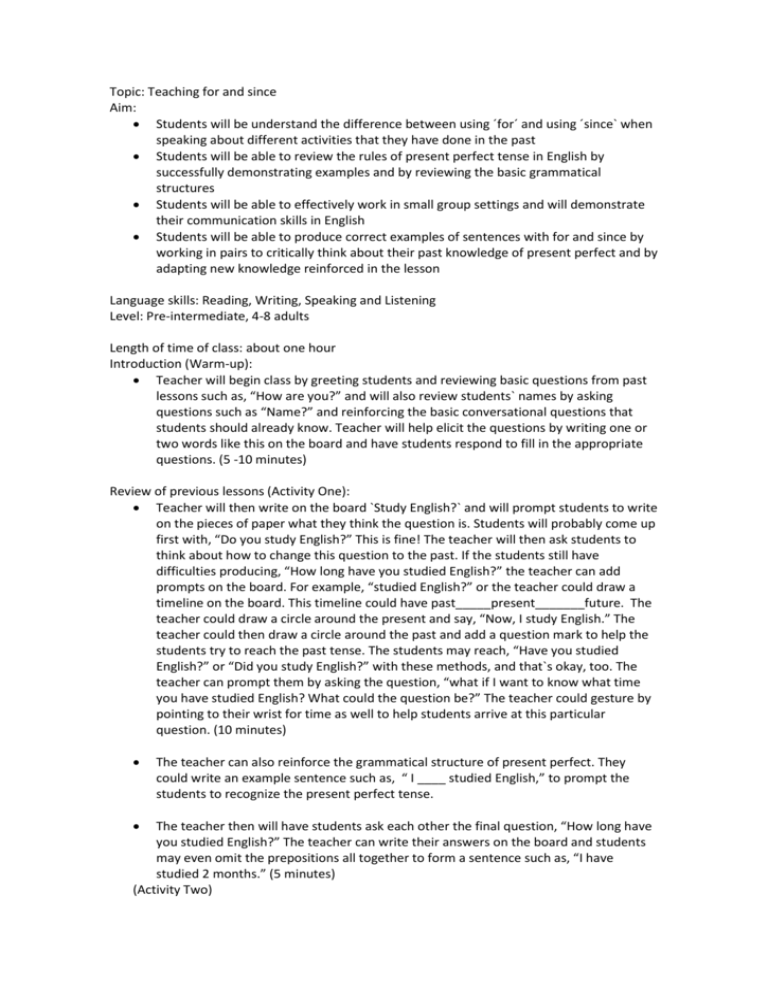
Topic: Teaching for and since Aim: Students will be understand the difference between using ´for´ and using ´since` when speaking about different activities that they have done in the past Students will be able to review the rules of present perfect tense in English by successfully demonstrating examples and by reviewing the basic grammatical structures Students will be able to effectively work in small group settings and will demonstrate their communication skills in English Students will be able to produce correct examples of sentences with for and since by working in pairs to critically think about their past knowledge of present perfect and by adapting new knowledge reinforced in the lesson Language skills: Reading, Writing, Speaking and Listening Level: Pre-intermediate, 4-8 adults Length of time of class: about one hour Introduction (Warm-up): Teacher will begin class by greeting students and reviewing basic questions from past lessons such as, “How are you?” and will also review students` names by asking questions such as “Name?” and reinforcing the basic conversational questions that students should already know. Teacher will help elicit the questions by writing one or two words like this on the board and have students respond to fill in the appropriate questions. (5 -10 minutes) Review of previous lessons (Activity One): Teacher will then write on the board `Study English?` and will prompt students to write on the pieces of paper what they think the question is. Students will probably come up first with, “Do you study English?” This is fine! The teacher will then ask students to think about how to change this question to the past. If the students still have difficulties producing, “How long have you studied English?” the teacher can add prompts on the board. For example, “studied English?” or the teacher could draw a timeline on the board. This timeline could have past_____present_______future. The teacher could draw a circle around the present and say, “Now, I study English.” The teacher could then draw a circle around the past and add a question mark to help the students try to reach the past tense. The students may reach, “Have you studied English?” or “Did you study English?” with these methods, and that`s okay, too. The teacher can prompt them by asking the question, “what if I want to know what time you have studied English? What could the question be?” The teacher could gesture by pointing to their wrist for time as well to help students arrive at this particular question. (10 minutes) The teacher can also reinforce the grammatical structure of present perfect. They could write an example sentence such as, “ I ____ studied English,” to prompt the students to recognize the present perfect tense. The teacher then will have students ask each other the final question, “How long have you studied English?” The teacher can write their answers on the board and students may even omit the prepositions all together to form a sentence such as, “I have studied 2 months.” (5 minutes) (Activity Two) If the students omit the preposition, the teacher can write the sentence on the board and encourage the students to fill in the blank with the correct preposition. For example, “I have studied English ______ 2 months.” The teacher would circle the blank space and have students try to elicit which preposition should go in the correct space. The teacher can continue this lesson with several more examples, such as, “How long have you lived here?” “How long have you known your best friend?” “How long have you worked at your job?” “How long has it been sunny?” The teacher will allow students to try to respond to these examples on their own. When a student answers correctly, the teacher will circle the correct response on the board and will emphasize that, for example, “I´ve lived here for 2 months” or if they answer with a specific time, “I´ve lived here since 2010.” (10-15 minutes). (Activity Three) The final section and the way that the teacher can test to see if the students have learned the concept during the class would be to draw several pictures on the board. These could be as simple as a person sleeping or as complex as a bus driving through the city, whatever the teacher feels most comfortable. Alternatively, the teacher can also ask the students to each draw a picture on the board. Then, the teacher can ask students each to provide a time. The teacher would make sure that there is a variety of times, either specific such as at 10:00 am or less specific, such as for 1 year. Then, the teacher would provide the students with some time to create sentences using for or since for each of the examples. The teacher can allow the students to work in pairs to come up with the example sentences. (10-15 minutes). As a review, the teacher will go over the answers with the class for the example sentences that the students have created and this would serve as an exit card so that the teacher knows that the students have successfully understood the lesson. (5 minutes). Possible Difficulties: Some potential difficulties include not all students being present, which would make pair work difficult. In this case, students can act as a trio or a duo, or the teacher could act as another partner for the students if necessary. Students may also be uncomfortable with guessing the grammar rules for fear of getting the answers incorrect in front of their peers. The teacher can prompt with more examples or use facial emotions or gestures to help encourage the students to answer the information correctly. Weaker students may be afraid to speak out in front of their classmates which is also why the teacher is allowing the students to work in pairs and has utilized several different methods to encourage the students to speak (visual examples, verbal examples and individual work). The teacher can also encourage stronger students to provide examples as well to help elicit examples from other students in the class, though this should be done only if the students refuse to speak out in the classroom.
